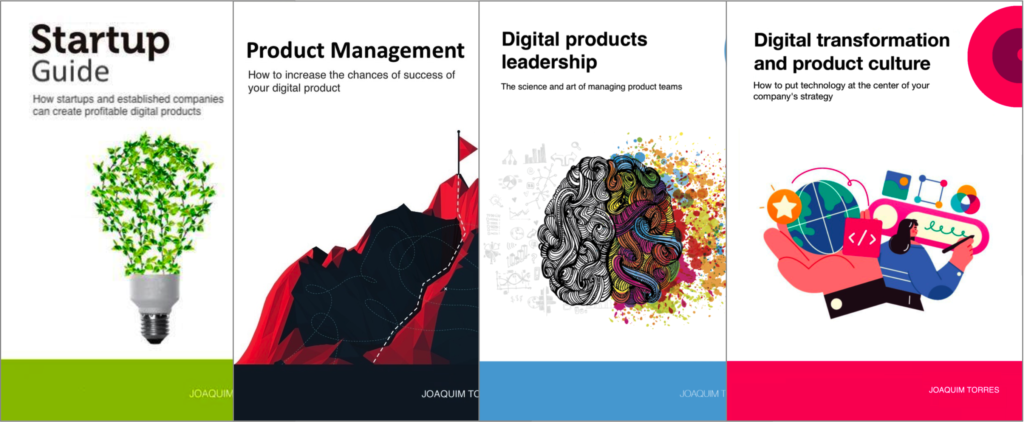
Outsource or internal team?
6 de August, 2024
Wishful goals vs stretch goals
20 de August, 2024In some mentoring sessions, I talk to people who are looking to transition their careers into product management but say that they have difficulty finding opportunities because they have no experience in this field.
I have noticed in these conversations that, in many cases, the person has experience in product management but not in a formal way with a defined role.
Remember that product management is:
Helping to build technology solutions (products) to solve the client’s problems while generating results (revenue, customers, profit, etc.) for the company that owns the products.
This definition does not say we must have the product manager title. It says what we should do. This means that if we are doing this, we are practicing product management, even if we do not call it product management. Once we understand this, we can—and should—seek knowledge about the management and development of technology products that show us the concepts, principles, and tools to help us execute it better and better.
Two examples
The first example comes from one of these mentoring sessions with a person looking to transition her career to product management.
She said she was studying product management and found the area very interesting. Still, since she had no experience in product management, it was very difficult even to get called for an interview for a product management position. In the conversation, she told me that she managed an online store for a sunglasses manufacturer. To do this work, she understood how people used the website to make purchases and asked the development team, which was outsourced, to make some improvements to the website so that the shopping experience for people who visited the website would be better, that is, so that people could find what they were looking for more easily. In addition, she implemented improvements to the purchasing process so that when a website visitor decided to buy, the process would be as simple as possible. The consequence was that after implementing these improvements, sales and customer satisfaction increased, and these customers recommended the store to their friends.
When she told me this, I explained to her that this was product management since she was using technology (the online store) to solve a customer’s problem (buying sunglasses) in a way that generated results for the company (increased sales and recommendations). She was doing product management without realizing it!
The other example comes from the beginning of my career. I co-founded a technology company with three other partners when I graduated in Computer Engineering at ITA in the early 1990s. The company was a BBS (Bulletin Board System), a precursor to the internet. Imagine a computer network where people connected using telephone lines and could send messages, download files, participate in forums, and even chat in chat rooms. All this happened in 1992/1993 when the internet did not exist. The Internet began to be made available in Brazil in late 1995.
There were four partners, but I was initially the only one working full-time. I was the SysOp, or system operator. This meant that I took care of everything, from the technical configuration and maintenance of the system to the installation of hardware and software. I was also responsible for answering users’ questions, solving technical problems, and managing subscriptions and billing.
One of my main concerns was keeping the BBS attractive and relevant. I was constantly looking for new things, such as files such as images, programs, and games. I also wanted to integrate with other BBSs to exchange messages between users of different systems, both in Brazil and in other countries.
Looking back, it is clear that I was playing the product manager role without realizing it. At that time, I focused on connecting the company’s goals – such as increasing user engagement – with solutions to customers’ problems and needs – their search for information, entertainment, and socialization. I always sought and created new “attractions” to keep users engaged and interested in returning to the BBS. This is precisely what a product manager does: using technology to solve customers’ problems and needs and, in doing so, achieve the company’s goals.
In 1998, we sold the company, which was called Dialdata and had become one of the first internet access and service providers in Brazil, to an American company called VIA NET.WORKS was buying internet service providers in several countries to create a global provider and eventually go public. After the sale, I received an offer to work at VIA NET.WORKS in a global position. At Dialdata, although I was unknowingly playing the product manager role, my official role was technology director. The offer I received was for the position of product director, reporting to the vice president of marketing. The position’s mission was to create a common product portfolio among the different companies in the group. I found the offer interesting and accepted. This was the first time I had officially held a product position, reporting to marketing, since this product management role at that time was traditionally allocated to marketing.
This happened because marketing is responsible for the famous 4Ps: product, price, place, and promotion. In the late 1990s, the need for a dedicated function connecting business objectives and customer problems and needs through technology was beginning to become apparent. Some companies placed this function in marketing, based on the P for products in the 4Ps of marketing, which I just mentioned, and others in technology, because at that time, the people who occupied this function were mostly technology people. In the early 2000s, the role of product management began to become more evident and eventually became an independent area.
When I joined Locaweb in 2005, Gilberto Mautner, its co-founder, and colleague from ITA, invited me to be a product manager and help with the company’s product portfolio diversification strategy. Gilberto created this strategy because, at the time, Locaweb only offered website hosting, and those free hosts, such as HPG, were starting to appear. My mission was to help diversify the product portfolio, helping develop and launch new products.
Workshops, coaching, and advisory services
I’ve been helping companies and their leaders (CPOs, heads of product, CTOs, CEOs, tech founders, and heads of digital transformation) bridge the gap between business and technology through workshops, coaching, and advisory services on product management and digital transformation.
Digital Product Management Books
Do you work with digital products? Do you want to know more about managing a digital product to increase its chances of success, solve its user’s problems, and achieve the company objectives? Check out my Digital Product Management books, where I share what I learned during my 30+ years of experience in creating and managing digital products:
- Digital transformation and product culture: How to put technology at the center of your company’s strategy
- Leading Product Development: The art and science of managing product teams
- Product Management: How to increase the chances of success of your digital product
- Startup Guide: How startups and established companies can create profitable digital products



